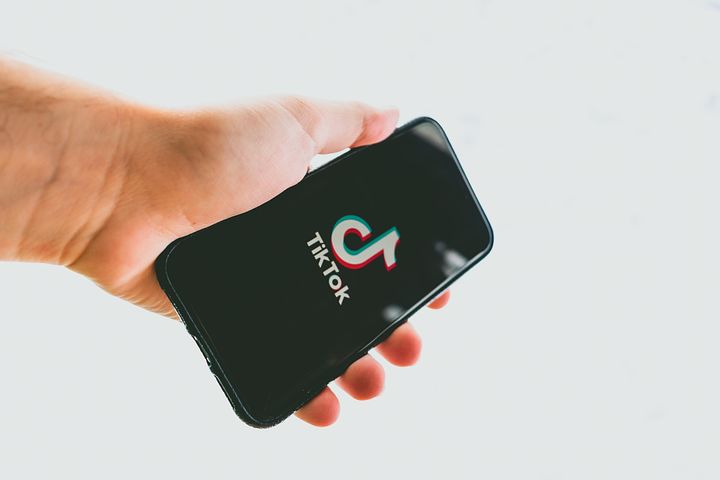Seriously, Just for a Second, Stop Scrolling on TikTok
Be warned: I’m gonna talk about TikTok.
I know, I know. You’re tired of hearing about it all the time, and you don’t like being told it’s bad because you’re gonna keep using it. I get it. And I understand why we defend it: it’s become a core part of our culture that only our generation truly understands. Me bringing up this tired, overdone argument seems annoying and you probably won’t wanna read it… but is it really that overdone?
Our generation says that we know that TikTok is harmful, but when one of our peers smugly points out its flaws, we sigh and shrug with defeat, as if we’re past the point of no return. Whenever I try to start the conversation, I’m already anticipating the raising of a white flag. It’s always, “we know, we know, we know. You win. It’s bad.” But that “acknowledgement” is just a poorly-disguised attempt at shutting down any further critical analysis of why it’s bad. And I realize that just using the word “bad” as a descriptor undermines my argument a little, but I’m using that as a catch-all phrase for right now to encapsulate the genuinely and deeply damaging grip it holds on all of us who use it.
Does that sound too dramatic? Maybe a bit. I’ll give you that. But if the number of hours of TikTok screen time continues to be embarrassingly high (I’m not sharing mine), I’ll be honest: I’m a little worried. I’m worried about the state of our compassion, empathy and sensitivity to others’ suffering — and that’s not too dramatic.
Let’s start with the obvious. We know the pandemic took an immense emotional and physical toll on us in ways that we may not truly begin to grasp the severity of until years from now, but I think we need to really take a step back and observe the impact of TikTok’s explosion during the COVID-19 lockdown in 2020. There was a 180% increase in TikTok users aged 15-25, according to Statista. And this uptick makes complete sense: the outside world was in a state of never-ending panic, chaos and uncertainty, and we were fed a never-ending stream of harmless, fun and silly content right when we needed it most. We bonded over our ability to escape our shared existential anxieties by collectively posting videos of us dancing to “Say So” by Doja Cat. Yes, we were alone and inside and scared, but somehow we were also together. And as long as we kept scrolling, we would stay together.
But something flipped. I don’t know when, and I don’t entirely know why. But what I am particularly concerned about is this: on your “For You page,” while mindlessly scrolling, you’ll see a video of that terrible explosion in Beirut in 2020. But then, thankfully, the blow is softened; The flick of your thumb takes you to the following video that analyzes, in excruciating detail, why Harry Styles’s Love On Tour outfit in Austin was better than the one he wore in Los Angeles.
I know it sounds like I’m hyperbolizing, but I promise you, I’m really not. Last year, I saw a video of a young girl satirizing what it’s like to live in a Ukrainian bomb shelter — eerily reminiscent of the style of day-in-my-life YouTube vlogs — perfectly nestled in between a video of a cute poodle named Bunny learning how to speak with buttons and a recipe video for an easy buffalo chickpea salad. Seeing depictions of brutal destruction and heart-wrenching, unadulterated despair disguised as comedy sandwiched in between gratifyingly-lighthearted content starts to blur the line between what is entertainment and what is genuinely horrible. It’s desensitizing us.
I did a quick experiment specifically for this article, and I implore you to do the same. One night, in the wee hours of the morning when I couldn’t close TikTok, I decided to screenshot each video I saw for the next 30 seconds. First, I saw someone joking about their excitement to consume copious amounts of alcohol during their last semester of undergrad. I then saw a woman explaining that her cousin had been missing for days and was begging other users to repost. The next video analyzed a clock visual hidden in the purple smoke of Taylor Swift’s “Lavender Haze” music video. The following video showed a cop taking someone to jail for a DUI even though the person was completely sober and also “mid-abortion free bleeding all over his vehicle.” The next person talked about the possibility of a black nothingness after we die. Lastly, I saw someone talking about how her experience with borderline personality disorder made her want to commit suicide.
Let me be clear. In no way do I mean to shame any of these people for using TikTok to help them deal with trauma. Many of us started using the app as an escape, and it’s likely that we’re going to continue to, as we still need a portal out of our overwhelming reality. But we should ask ourselves: is this a healthy coping mechanism, or are we creating a positively-harmful feedback loop that encourages us to share intimate details of our trauma in exchange for momentary virality?
I’m not asking you to stop posting these kinds of videos if they help you, and I’m not asking you to stop using TikTok. I know I sure won’t, at least for the time being. I just want us to be more cognizant of the videos we create and consume, but more importantly, to be more cognizant of the fact that even though it’s easier to just scroll past painful videos and free ourselves of the discomfort, sometimes we shouldn’t. We desperately need the reminder that these videos are not just for our escapist consumption. Even if they want you to think otherwise, even if they want you to laugh with them, the real people behind these videos are actually, genuinely suffering — so, when you see it, please let yourself feel it.
Sophia Forlenza, FCRH ’24, is a digital technologies and emerging media major from Brookfield, Conn.

Sophia Forlenza is a senior from Brookfield, Conn. She is majoring in digital technologies and emerging media and minoring in television. She first joined...










































































































































































































